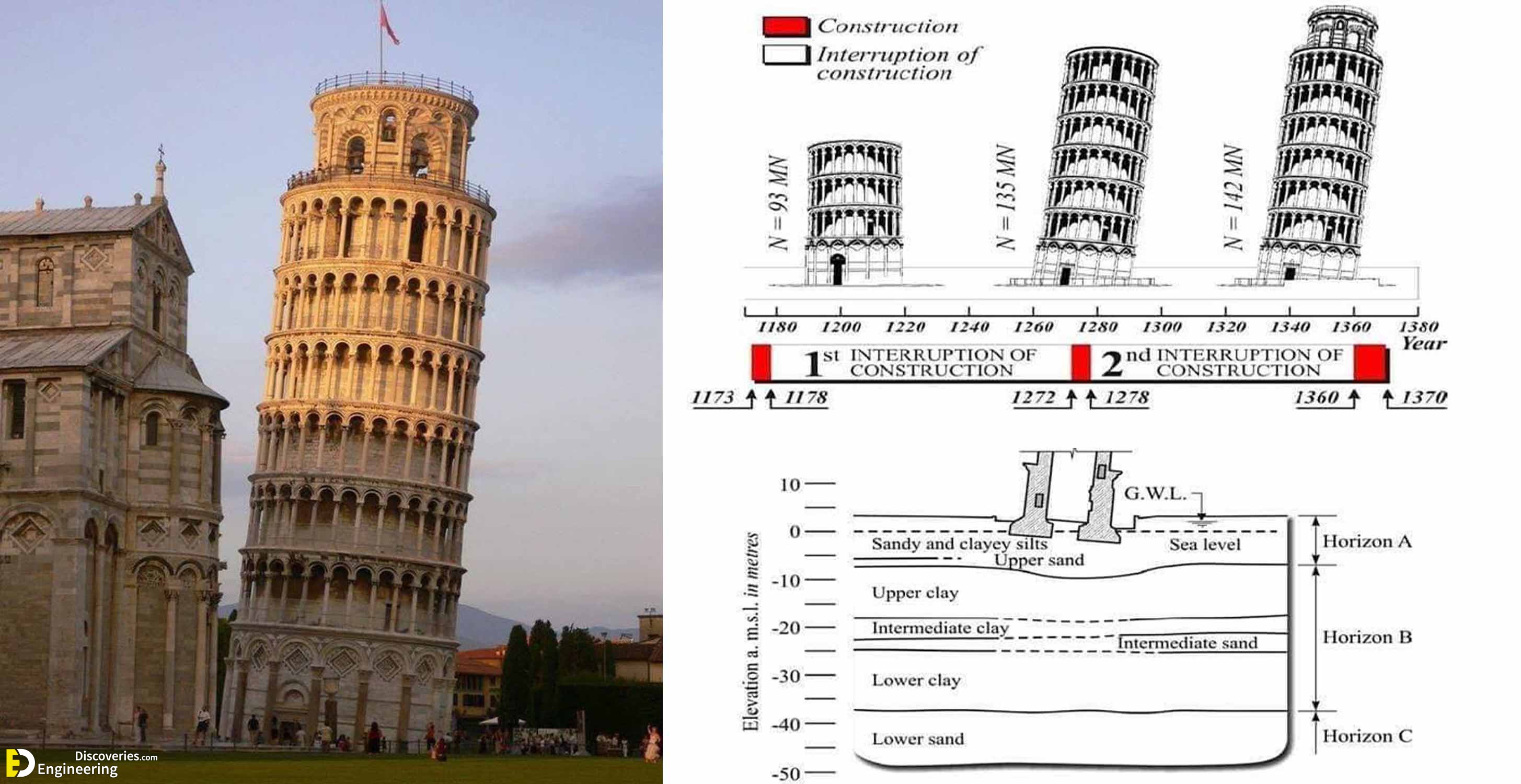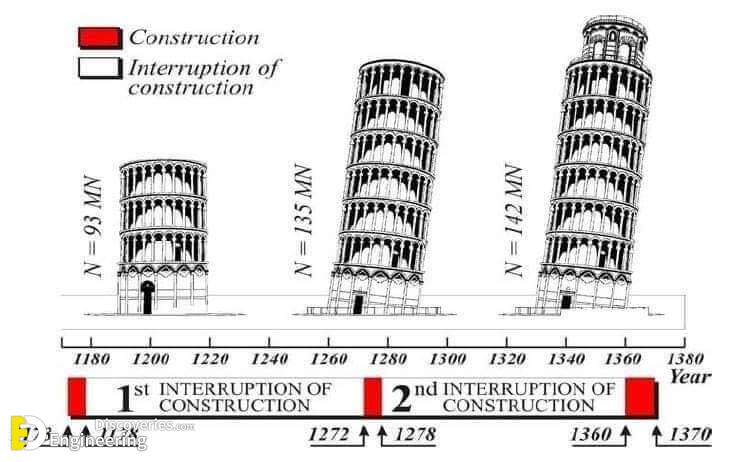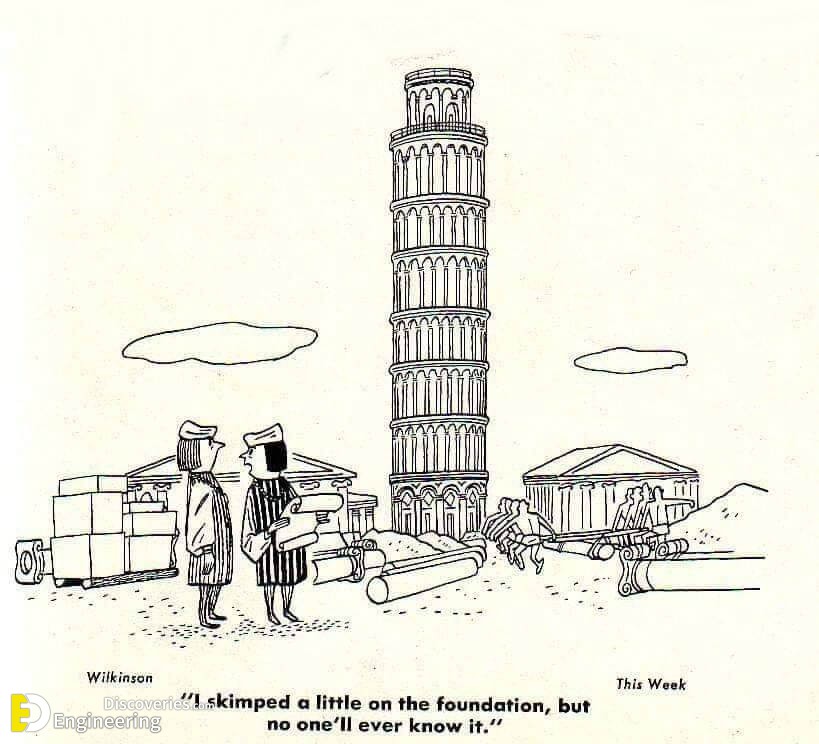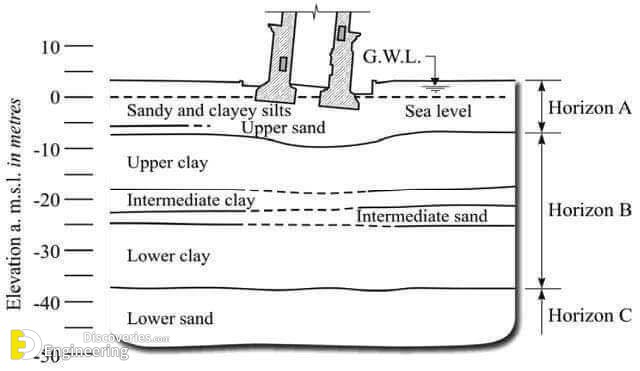Quick facts
→ Name: Tower of Pisa, Leaning Tower of Pisa, Bell Tower of Pisa
→ Italian Name: Torre Pendente di Pisa
→ Location: City of Pisa, Italy.
→ Accommodation: Find Hotels in Pisa
→ Construction Year: started in 1173, finished in 1399
→ Original Height: 60 m
→ Actual Height: 56.67m =highest side; 55,86m =lowest side
→ Stairs: 251 steps
→ Weight: 14,500 tonnes
The Leaning Tower of Pisa (Italian: Torre pendente di Pisa) or simply the Tower of Pisa (Torre di Pisa [ˈtorre di ˈpiːsa; ˈpiːza]) is the campanile, or freestanding bell tower, of the cathedral of the Italian city of Pisa, known worldwide for its nearly four-degree lean, the result of an unstable foundation. The tower is situated behind the Pisa Cathedral and is the third-oldest structure in the city’s Cathedral Square (Piazza del Duomo), after the cathedral and the Pisa Baptistry.
The tower’s tilt began during construction in the 12th century, due to soft ground on one side, which was unable to properly support the structure’s weight. The tilt increased in the decades before the structure was completed in the 14th century. It gradually increased until the structure was stabilized (and the tilt partially corrected) by efforts in the late 20th and early 21st centuries.
The height of the tower is 55.86 metres (183.27 feet) from the ground on the low side and 56.67 metres (185.93 feet) on the high side. The width of the walls at the base is 2.44 m (8 ft 0.06 in). Its weight is estimated at 14,500 metric tons (16,000 short tons).[1] The tower has 296 or 294 steps; the seventh floor has two fewer steps on the north-facing staircase. In 1990 the tower leaned at an angle of 5.5 degrees, but following remedial work between 1993 and 2001, this was reduced to 3.97 degrees, reducing the overhang by 45 cm at a cost of £200m. It lost a further 4 cm of tilt in the two decades to 2018.
Architect
There has been controversy about the real identity of the architect of the Leaning Tower of Pisa. For many years, the design was attributed to Guglielmo and Bonanno Pisano, a well-known 12th-century resident artist of Pisa, known for his bronze casting, particularly in the Pisa Duomo. Pisano left Pisa in 1185 for Monreale, Sicily, only to come back and die in his home town. A piece of cast bearing his name was discovered at the foot of the tower in 1820, but this may be related to the bronze door in the façade of the cathedral that was destroyed in 1595. A 2001 study seems to indicate Diotisalvi was the original architect, due to the time of construction and affinity with other Diotisalvi works, notably the bell tower of San Nicola and the Baptistery, both in Pisa.
Construction
Construction of the tower occurred in three stages over 199 years. Work on the ground floor of the white marble campanile began on August 14, 1173, during a period of military success and prosperity. This ground floor is a blind arcade articulated by engaged columns with classical Corinthian capitals.
The tower began to sink after construction had progressed to the second floor in 1178. This was due to a mere three-metre foundation, set in the weak, unstable subsoil, a design that was flawed from the beginning. Construction was subsequently halted for almost a century, because the Republic of Pisa was almost continually engaged in battles with Genoa, Lucca, and Florence. This allowed time for the underlying soil to settle. Otherwise, the tower would almost certainly have toppled.
In 1272, construction resumed under Giovanni di Simone, the architect of the Camposanto. In an effort to compensate for the tilt, the engineers built upper floors with one side taller than the other. Because of this, the tower is curved. Construction was halted again in 1284 when the Pisans were defeated by the Genoans in the Battle of Meloria.
The seventh floor was completed in 1319. The bell-chamber was finally added in 1372. It was built by Tommaso di Andrea Pisano, who succeeded in harmonizing the Gothic elements of the bell-chamber with the Romanesque style of the tower. There are seven bells, one for each note of the musical major scale. The largest one was installed in 1655.
After a phase (1990–2001) of structural strengthening, the tower is currently undergoing gradual surface restoration, in order to repair visible damage, mostly corrosion and blackening. These are particularly pronounced due to the tower’s age and its exposure to wind and rain.
Tower of Pisa Interesting Facts
1- Pisa got its name in 600 BC from a Greek word meaning “marshy land.”
2- There are several other towers in Pisa that also lean: the bell tower at the church of St. Michele dei Scalzi, and the bell tower at the church of St. Nicola.
3- The cathedral and baptistery are also sinking.
4- Galileo was baptized in the baptistery in 1565.
5- The foundation of the cemetery, Campo Santo, is made up of 53 shiploads of the earth that were brought back from the Hill of Calvary in Jerusalem.
How tall is the Tower of Pisa?
→ Measurements
1- The original completed height of the Tower of Pisa is 60 meters. Actually, the tower’s height is 56.67m on the highest side and 55,86m on the lowest side.
2- The outside diameter of the Leaning Tower of Pisa’s base is 15.484 meters.
3- Width of walls at the base is 2.4384 meters
4- Weight of the tower is approximately 14,500 tonnes
5- There are 251 steps from the bottom to the top of the Pisa tower.
6- Other interesting facts can be found on our page Historical facts about the Tower of Pisa.














